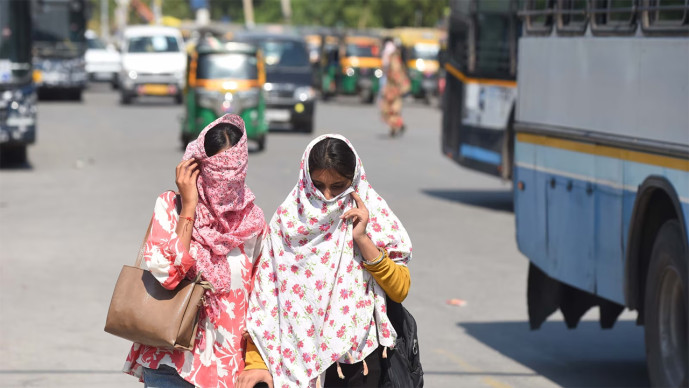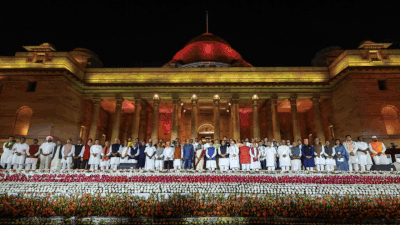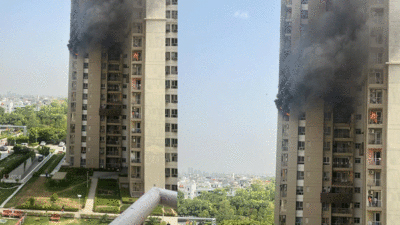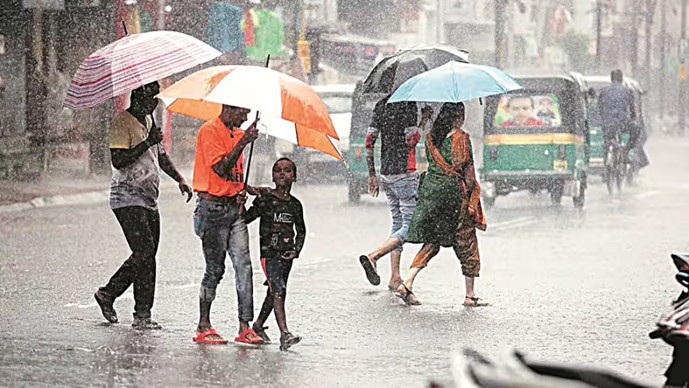Not just Delhi: How temperature records are tumbling across the world

The extremely high temperatures recorded in New Delhi in the last two days are extraordinary. But they are in keeping with the global trend in the last couple of years that has seen record-breaking temperatures being reported from several locations across the world.
For example, the United Kingdom crossed 40 degree Celsius for the first time ever in July 2022. A small town in China’s northwest recorded 52 degree Celsius last year, the highest ever for that country. In 2021, Sicily in Italy recorded 48.8 degree Celsius, the highest for Europe ever. These are just a few examples.
An analysis by Carbon Brief, a UK-based publication focused on climate change, last year showed that nearly 40% of the Earth had recorded its highest-ever daily temperature between 2013 to 2023. This includes places in Antarctica as well. The highest temperature in India, in Rajasthan’s Phalodi, was also recorded during this period.
However, the highest ever temperature recorded anywhere on Earth, 56.7 degree Celsius in a place called Death Valley in the desert of California, United States, was recorded more than 100 years ago, in 1913.
If the 52.9 degree Celsius recorded at one of the stations in Delhi on Wednesday is verified, it would be an all time high for India. But as of now it is suspect. The India Meteorological Department (IMD) said it was checking the authenticity of the reading by an automatic weather station in Mungeshpur, located on the northern outskirts of Delhi, bordering Haryana.
The doubts over the Mungeshpur reading stems mainly from the fact that none of the other stations in Delhi — there are 20 of them — recorded a temperature that was close to 52.9 degree Celsius. The maximum temperature in other stations of Delhi on Wednesday was recorded by the Najafgarh station, which gave a reading of 49.1 degree Celsius. The station that is taken to be representative of Delhi — Safdarjung — showed a maximum temperature of 46.8 degree Celsius. This itself was an 80-year record, the highest since 1944.
Even if the Mungeshpur data was not so overtly suspicious — and IMD officials admit it is — a record-breaking temperature like this would have needed a verification. Met offices across the world do a double-check on any such extreme weather event. It took a few days for the UK record to be officially confirmed by the UK Met office. The Sicily temperature record for Europe became official only in January this year, almost three years after it was recorded.
But record-breaking or not, there is no doubt about the fact that Delhi, and indeed most of northern India, is going through one of the worst heatwaves. In most places, maximum temperatures are 5 to 10 degree Celsius above normal. Wednesday was the fourth consecutive day when the Safdarjung station recorded a temperature well above 45 degree Celsius. The fact that temperatures have not been record-breaking is no consolation for populations reeling under increasingly prolonged and severe heatwave conditions.
“It is very concerning that annual trends in heatwaves now show temperature departures of 5-9 degree Celsius from the normal summer weather… Heatwaves are clearly the single largest threat to India’s well-being today,” said Aarti Khosla, director of Climate Trends, a climate organisation.
The year 2024 was predicted to be extremely warm. Last year had emerged as the warmest year on record, globally, and the effect was expected to continue this year as well. And so far, it has.
April 2024 was the 11th consecutive month when the global average monthly temperature for that month touched a new record, according to the Copernicus Climate Change Service, an agency of the European Commission. The one year period between May 2023 to April 2024 was warmer than any previous 12-month period, about 1.61 degree Celsius higher than the pre-industrial (1850-1900) average.
The warming over India is not as pronounced as the world taken as a whole. Annual mean temperatures over India have risen by about 0.7 degree Celsius compared to 1900 levels. This is significantly lower than the 1.59 degree Celsius rise for average land temperatures across the world. If oceans too are included, global temperatures right now are at least 1.1 degree Celsius higher than pre-industrial averages.
The current spell of high temperatures in Delhi, and most of north India, looks anomalous mainly because it is being compared to normal temperatures that are based on averages of 1981-2010 period. Going forward, 45 degree Celsius plus temperatures are likely to very quickly become the new normal, and a 50 degree Celsius reading will no longer look suspicious.









.jpg)









































_copy.jpg)



.jpg)


.jpg)


.jpg)








